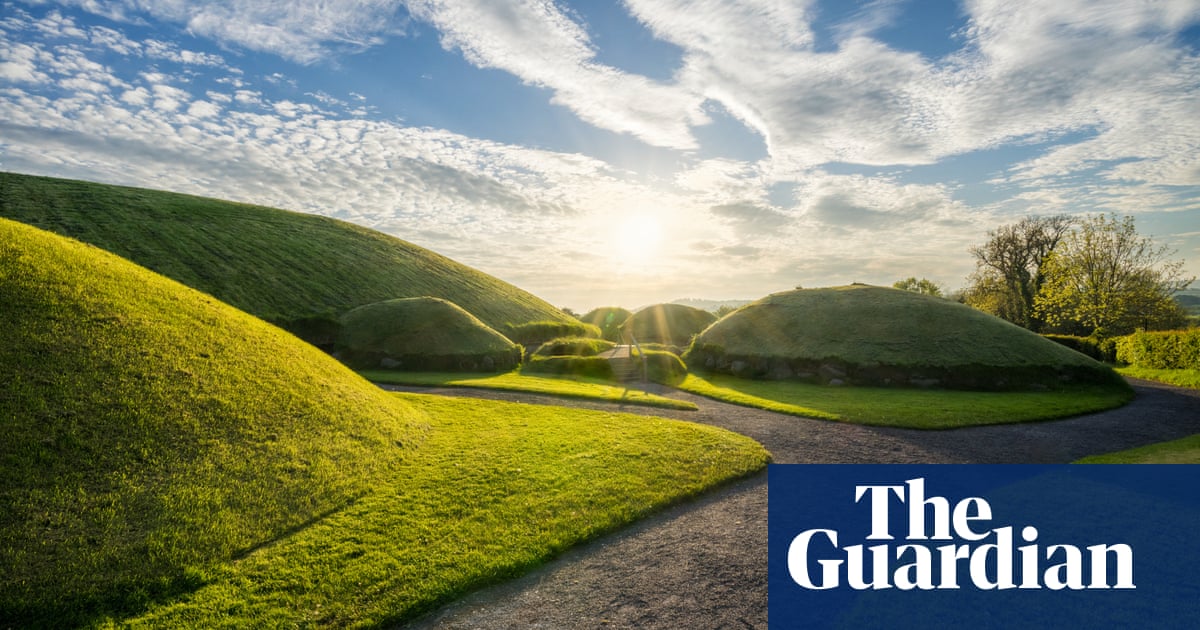Ireland’s National Parks and Wildlife Service (NPWS) has had a busy time in recent months, adding another two sites to its portfolio of six national parks since last September. First, it announced the state purchase of 223 hectares (551 acres) of land on the Dowth Hall estate in County Meath. Then, on Earth Day in April, it unveiled its first marine park – 566 hectares centering on Corca Dhuibhne – the Dingle Peninsula – and including Conor Pass, a vertiginous narrow laneway that whips around the contours of Mount Brandon in County Kerry.
Brú na Bóinne national park
Just an hour from Dublin, County Meath’s low-lying fertile land, dappled with fern-green hills, has produced bountiful harvests since the dawn of civilisation. To the north of the county, on a bend of the River Boyne, lies Brú na Bóinne (Boyne Valley), a place where several millennia of human endeavour still scar the landscape with a series of massive cairns, castles and ancient relics.
This is now Ireland’s seventh and smallest national park, following the purchase of a large tract of historical land bounded by two miles of the River Boyne, known as the Dowth Hall estate (or demesne). The park will also include the existing state-owned plot that contains Newgrange and Knowth passage tombs to become a vast, ancient necropolis along with dozens of satellite passage graves and Europe’s largest and most prominent concentration of megalithic art. Dowth will bring with it the addition of splendid mansions clustered close to prehistoric sites.
Sites within the park
With so many places to explore in Brú na Bóinne, it’ll take a full day to discover them all. If time is short, these are the major sites open to visitors, starting with the 43-hectare site that’s home to Newgrange and Knowth.
Newgrange
For most, the target destination in Brú na Bóinne is Newgrange. It’s located in the original state-owned parcel of land and has drawn visitors for centuries – long before Victorian-era tourists scrawled their signatures on its hefty boulders. Its powder-white stone circular walls and domed roof, once buried beneath clay, have sat like an ancient cosmic spaceship over the pastoral setting for more than 5,000 years, making it older than the pyramids at Giza or the standing stones at Stonehenge. Rising 13 metres over the forests and farmlands, it has a diameter of…
Click Here to Read the Full Original Article at Travel | The Guardian…
